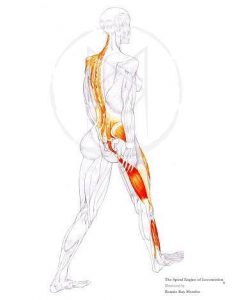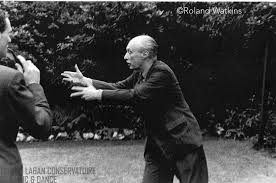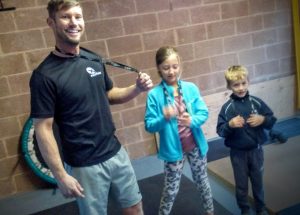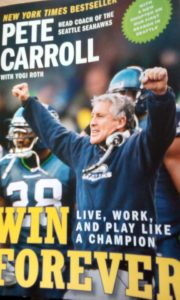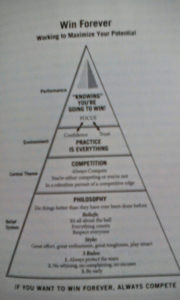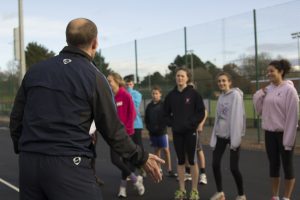7 Things I Learnt In 2016
2 CommentsReflective practice
I try to learn more than 7 things a week, let alone a whole year, but part of reflective practice is being disciplined and accountable. Limiting myself to listing the 7 things in a year helps focus my mind and stop readers from being bored.
Speaking on the phone to Mark Sheppard yesterday (whom I last saw in 2014), I said to him “I haven’t been standing still for the last 3 years Mark!” as we discussed formative versus summative fitness testing. “I wouldn’t expect you to” he replied.
Conversations with coaches like Mark, attending conferences like GAIN, reading, observing, listening to the athletes I coach and my own training are all fertile breeding grounds for ideas and reflections. Although I am unable to stop getting older, I am able to stay feeling young by continually learning. I may well be learning more at 47 than I did at 17.
1.The older I get, the less I know.
I am continually dumbfounded by the way in which young people deal in absolutes: “This session will work, 100% for sure” or “The hamstrings don’t go below your knee, they are in the middle part of the back of your leg“. These were two quotes given to me by different cyclists. No room for middle ground here.
I seem to be telling athletes who come to train with me “Maybe” or “perhaps” or “we’ll try it and see” a lot more than I did 10 years ago. Maybe it is the short attention spans created by too much screen time, or maybe it is the ability to shut out people who have different opinions from us, but young people (and some coaches) are rarely able to dig deeper than asking “is yoga good” and expecting a one word answer.
2. Getting under the bar is hard for most athletes.
Maybe I knew this already, but it has come into focus this year as many of our weightlifters can pull high, but struggle to get under the bar in the snatch. Thanks to Keith Morgan who reminded me of these exercises.
 3. Predicting 1 mile times in children.
3. Predicting 1 mile times in children.
The best indicators are faster 50m sprint time,taller and lower body fat percentage compared to peers. Too much emphasis is spent on trying to “train for the test” by running further and slower. Children who eat healthily and are very active will run faster over distances. We need to allow them to do more of this.
4. Summative versus formative testing.
I got this from “Physical education for children: a focus on the teaching process.” (thanks Greg Thompson). In a rush to replicate “elite sport“, children are often subjected to the dreaded “battery of fitness tests“. However, they are normally in a developmental stage and are either learning the exercises, or still growing. In this case any testing should be formative: assessing how they move through good observation skills.
Summative testing is the common feature now, even taught in schools for children to perform on other children. It measures the absolute and assumes that the skill is robust enough to be tested. This is suitable for athletes experienced at that activity, rather than just experienced athletes.
For example, testing back squat on International Rugby players is fine as they are experienced in the weight room. Doing the same test on 12 year old girls who look like new born foals when they try and squat is completely inappropriate.
5. “Fascia is like a onesie for your body”
So said Dr. Homayun Gharavi at breakfast one morning at GAIN. After reading “Anatomy Trains” earlier in the year (thanks Joe P) I became much more aware of how fascia works in our body. At 47, I need to get moving more and more to counteract the influence of gravity which is beating me into a slumping Trogladyte at every opportunity.
The connections that fascia have, and how they adapt to continual postures and positions is something I have really found interesting. My training now includes getting into as many different varied and continued patterns as possible.
6. Rudolf Laban was a genius.
This Hungarian immigrant spent about 20 years in the UK where he had a big influence on teachers through his observations of movement. This started in dance, but was then applied to other disciplines such as gymnastics, which is where I became interested.
Unfortunately, all his good work seems to have been forgotten, in a race for schools to either just talk about p.e. or to play competitive sport (I see this first hand in Devon, ironically as Laban spent much time at Dartingotn School near Totnes).
Nowadays you will hear much talk in coaching circles about “constraints led coaching” as if it is something ground breaking. Laban was using guided discovery and environmental and task constraints 70 years ago. The work by Logsdon, Mauldon, Layson, Morison et al. built on this and created “Educational Gymnastics”.
I am using a lot of their work and approaches not only in my gymnastics coaching, but in everything else I do (works wonders on the fascia too). I am standing on the shoulders of Giants.
7. If you have to measure one thing, measure attendance.
I got this from Steve Magness at GAIN. I took it on board and have been diligent in recording and rewarding attendance publicly. Every athlete who attends 15 sessions gets a club lanyard: from the youngest gymnast to our Senior Internationals. As John Wooden says “I will give you the treatment you earn and deserve“.
This has really highlighted who turns up regularly, including many “ordinary” athletes, but who continue to improve. If they keep this up, who knows where they might end? But, they are getting into good habits.
The downside of this has been parents having a pop at me when their children don’t turn up and they don’t get a lanyard: they can’t be bought, they have to be earnt!
Thanks for reading and helping me with my reflective practice. If you have anything special that you have learnt in 2016, please add a comment below.
I look forward to doing better coaching and learning more in 2017. Merry Christmas to you all.



